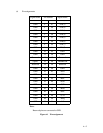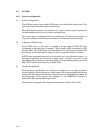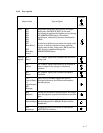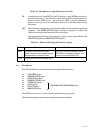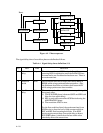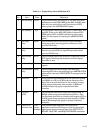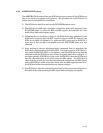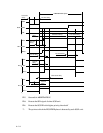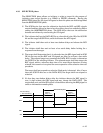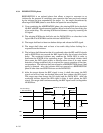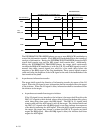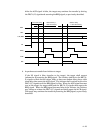4.3.2 ARBITRATION phase
The ARBITRATION phase allows one SCSI device to gain control of the SCSI bus so
that it can initiate or resume an I/O process. The procedure for an SCSI device to
obtain control of the SCSI bus is as follows:
— The SCSI device shall first wait for the BUS FREE phase to occur.
“ The SCSI device shall wait a minimum of a bus free delay after detection of the
BUS FREE phase (i.e. after the BSY and SEL signals are both false for a bus
settle delay) before driving any signal.
” Following the bus free delay in Step “, the SCSI device may arbitrate for the
SCSI bus by asserting both the BSY signal and its own SCSI ID, however, the
SCSI device shall not arbitrate (i.e. assert the BSY signal and its SCSI ID) if
more than a bus set delay has passed since the BUS FREE phase was last
observed.
‘ After waiting at least an arbitration delay (measured from its assertion) the
SCSI device shall examine the DATA BUS. If a higher priority SCSI ID bit is
true on the DATA BUS (DB(7) is the highest), then the SCSI device has lost the
arbitration and the SCSI device may release its signals and return to Step —. If
no higher priority SCSI ID bit is true on the DATA BUS, then the SCSI device
has won the arbitration and it shall assert the SEL signal. Any SCSI device
other than the winner has lost the arbitration and shall release the BSY signal
and its SCSI ID bit within a bus clear delay after the SEL signal becomes true.
An SCSI device that loses arbitration may return to Step —.
’ The SCSI device that wins arbitration shall wait at least a bus clear delay plus a
bus settle delay after asserting the SEL signal before changing any signals.
4 $ 13



